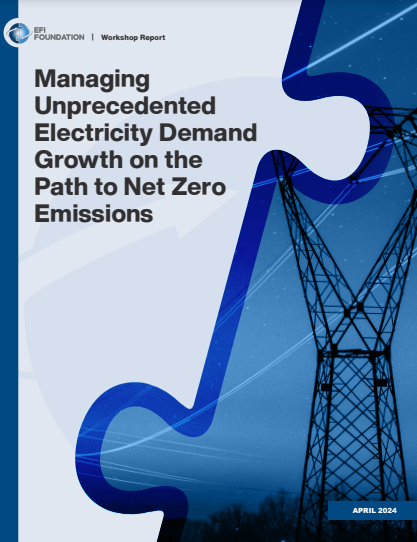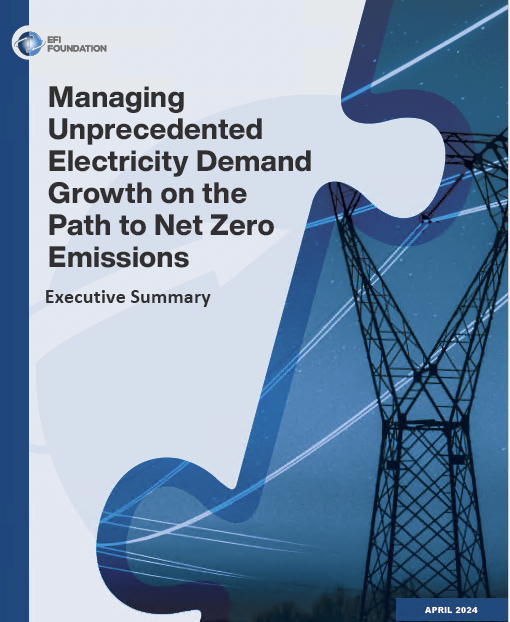Managing Unprecedented Electricity Demand Growth on the Path to Net-Zero Emissions (April 2024) is a report summarizing findings from a workshop that the EFI Foundation hosted in February 2024 with a group of nearly 30 senior-level experts to discuss the implications of recent public announcements of unprecedented load growth across the United States. Participating stakeholders included utilities, systems operators, industry experts, former policymakers and regulators, nongovernmental organizations, consumers, and equipment manufacturers.
The economywide transition to net-zero emissions will rely heavily on decarbonizing the power sector. For years, relatively flat power demand provided grid operators a clear and certain view of the scale of clean energy resources needed to reach zero-carbon emissions. Now, electricity load is increasing, driven in part by massive incentives in domestic manufacturing; trends in electrification of transportation, buildings, and industry; clean energy targets across the economy; and new investments in data centers and artificial intelligence. The pace of electricity load growth could nearly double or even triple over the next five years. These load growth trends have potentially paradigm-shifting implications for the power sector, affecting system-wide reliability in the near term and changing the course of deep decarbonization in the mid-term.
Previously unforeseen load growth presents challenges with respect to continuing coal plant retirements, integrating renewables, and maintaining reliability. However, utilities, system operators, and policymakers have an opportunity to proactively collaborate and plan for a future that supports technologies that are clean, reliable, and affordable.
As stakeholders grappled with the new load growth reality, four major themes emerged during the conversation:
- Recent projections are likely underestimating actual load growth. Participants agreed that the projection that the pace of electricity load growth will double in five years is likely an underestimate as more utilities update their load growth forecasts.
- Region-specific approaches are necessary for managing near-term load growth. Regions across the United States are experiencing different paces of load growth and their options vary for managing it. Reliable and affordable electricity cannot be compromised as cities, states, and regions work to meet climate goals. However, few existing technologies can provide clean, reliable, and affordable electricity.
- Stakeholder alignment is critical to meet the dual challenges of load growth: manage reliability and plan for deep decarbonization. Key stakeholders that collectively manage significant new loads must be aligned to make the necessary investments in generation, transmission and distribution, and other resources that help manage the system.New large loads need to be developed in close coordination with grid planners and operators.
- Stakeholders are seeking flexibility to manage load growth uncertainty. Increased transparency and collaboration can reduce uncertainty. Durable policies are also critical for investors to feel confident deploying large amounts of capital to projects.
Decision-makers must prioritize investments in infrastructure, leverage technological innovations, and advocate for supportive policies. They should also engage with a wide range of stakeholders and develop strategies that are responsive to regional dynamics. By embracing these recommendations, the energy sector can manage the challenges of electricity load growth on the path to net-zero emissions.
Supplemental Material
Related Content
(Share this post with others.)







